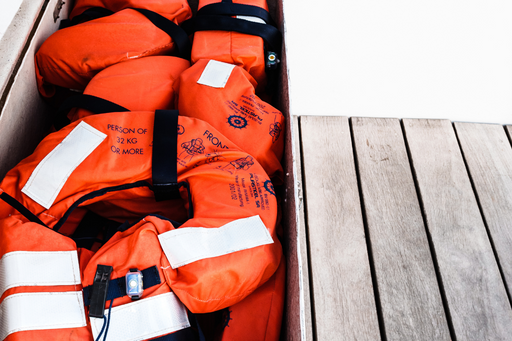
How to properly clean, store, and maintain your life vests
A life jacket is a personal flotation device (PFD) that keeps you afloat and from drowning in water. It is designed to be worn by people of all ages and abilities. Life jackets are lightweight, comfortable, and easy to put on and take off.
The most important thing to remember when choosing a life jacket is that it should fit properly. Your jacket should be snug enough that it doesn’t move around on your body but loose enough so that breathing is not restricted. When trying them on, make sure there are no gaps between the neckline and chin strap or between the waistband and strap – if there are any areas where water could leak in, this could potentially lead to drowning.
Life jackets are important pieces of safety equipment, so it's crucial to keep them in good condition. You'll want your life vest to be clean and ready for use in case of emergency. In this article, we'll show you how to properly clean, store and maintain your life vests.
Wash your life vests
The first step of caring for your life jackets is properly washing them after each use. Wash your life vests using a mild detergent and a soft cloth or sponge. Wash in warm water, rinse thoroughly, and dry flat.
Washing can help remove pesticides, fertilizers and other contaminants from the surface of the life vests. Additives in fabrics like these may cause damage to the material if it's washed with other clothing items that have been treated with chemicals (like sunscreen).
In addition to regularly washing your life vests after each use, you’ll want to treat them with mold and mildew prevention products. This will ensure they are free from any mold or mildew spores the next time you pull them out for use.
Keep them dry
The next step of caring for your life jackets is making sure you are drying them properly. This can be done by laying the vests out on a towel or t-shirt and letting them dry in the shade, not in the sun. A hairdryer should never be used to dry your life vests, as this may melt their components and cause irreparable damage. Similarly, washing machines are not recommended for cleaning these vests as they can also cause damage or even destroy them altogether.
Store them properly
Storing your life vest properly is just as important as cleaning it. Just like you would store any other piece of gear, make sure to keep it in a safe and dry place. When life vests are stored improperly, they can be damaged by heat or cold and become unusable. It also makes them more likely to rip or tear if you’re trying to throw them on in an emergency situation.
Keep your life vest away from extreme temperatures and humidity levels when storing them in your boat or car (or wherever else they may be located). Avoid storing the flotation device in garages where there are vehicles that run often because they will emit heat into the garage area when running which can damage the material over time leading up to failure when being used out on the water!
Also avoid storing these items near windows where sunlight is able to hit them directly; this will cause discoloration over time as well which will eventually cause failure when being used out on open waters! This could also lead up collapsing due their materials being weakened by sun exposure.
Double check your life vests
At the beginning of each boating season it is important to check the life vests to determine that they are in good condition.
Checking your life jacket is important because it's a safety measure. The life jacket should look as good as new and have no holes in it or rips in the material. You also want to make sure that both straps aren't frayed or cut too much, as this could mean that they're unsafe to use.
Look for tears, punctures, cuts and abrasions and seams that are starting to unravel. After you have done all of the above, and you are still unsure about whether or not your vest is still safe, then you should replace it. Life jackets should be replaced after any fall, impact or prolonged exposure to water. It is also good practice to replace your life jacket every few years, whether or not it has been exposed to the elements.
Key Takeaways
Caring for your life vest is essential to prolonging its useful life, but most people don't realize how easy this process can be. In the event that you need to replace your old harness, or purchase a new one to meet specific requirements from your organization, here is a quick refresher on how to ensure your life vest stays in good condition over time: - Allow your life vests to breathe. - Store your life vests in a dry, dark place. - Don’t store them in a plastic bag. - Don’t store them near a heat source (such as an attic or furnace). - Don’t store them near strong chemicals (like paint thinner or motor oil). - And definitely don't ever leave the thing to bake in the sun on your back deck!
We hope that this guide on how to properly care for your life vests has been helpful. It will equip you with the proper knowledge and understanding of how to make sure that it remains in its best condition. By following these tips, you can ensure that your vest will last a long time and be able to save your life during an emergency.
